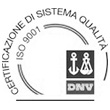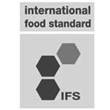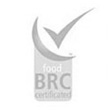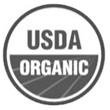Turmeric
(Curcuma longa)
Turmeric, Indian saffron – Ingl., Kurkuma – Ted., Curcuma, Safran des Indes – Fr, Curcuma – Sp., Куркума - Russ.
Turmeric, like ginger, belongs to the Zingiberaceae family and is grown natively in southern Asia and India. This state is the largest producer and consumer of turmeric; it is also cultivated in southern China, Africa, Brazil and Central America. The spice consists of a rootstock( rhizome), reddish orange when fresh and bright yellow when dried.
ground turmeric.
Food Composition
Turmeric contains curcumin – a yellow natural dye (non toxic); perhaps it is the most commonly used in food and best known by the acronym E-100.
It contains sugar (up to 30%), proteins, minerals, vitamins, resins.
Its essential oil contains turmelone, zenzerone, atlantone and other components.
Culinary Use
Turmeric powder is the main ingredient in curries,to which it gives the typical golden color. It has a delicate aroma and flavor is not particularly intense.Its coloring effect is saffron -like, although its flavor and the aroma are less intense . This spice is primarily used for its natural dye, and can be found in pastries, sauces, biscuits, cheese, ice cream and drinks.
It is a characteristic ingredient of Indian cuisine and South East Asia.
Healing Effect
Turmeric, like rosemary, has remarkable antioxidant properties, and digestive, especially helping the digestion of fats.
Several studies have shown that curcumin, by its antioxidant effect, seems to be useful for the prevention and treatment of tumors of liver and digestive system.
It is useful to detoxify liver. Turmeric has anti-inflammatory important properties (useful in case of menstrual cramps, fever, arthritis and toothaches).
Preservation
Turmeric should be stored in ventilated, dry and dark places.





